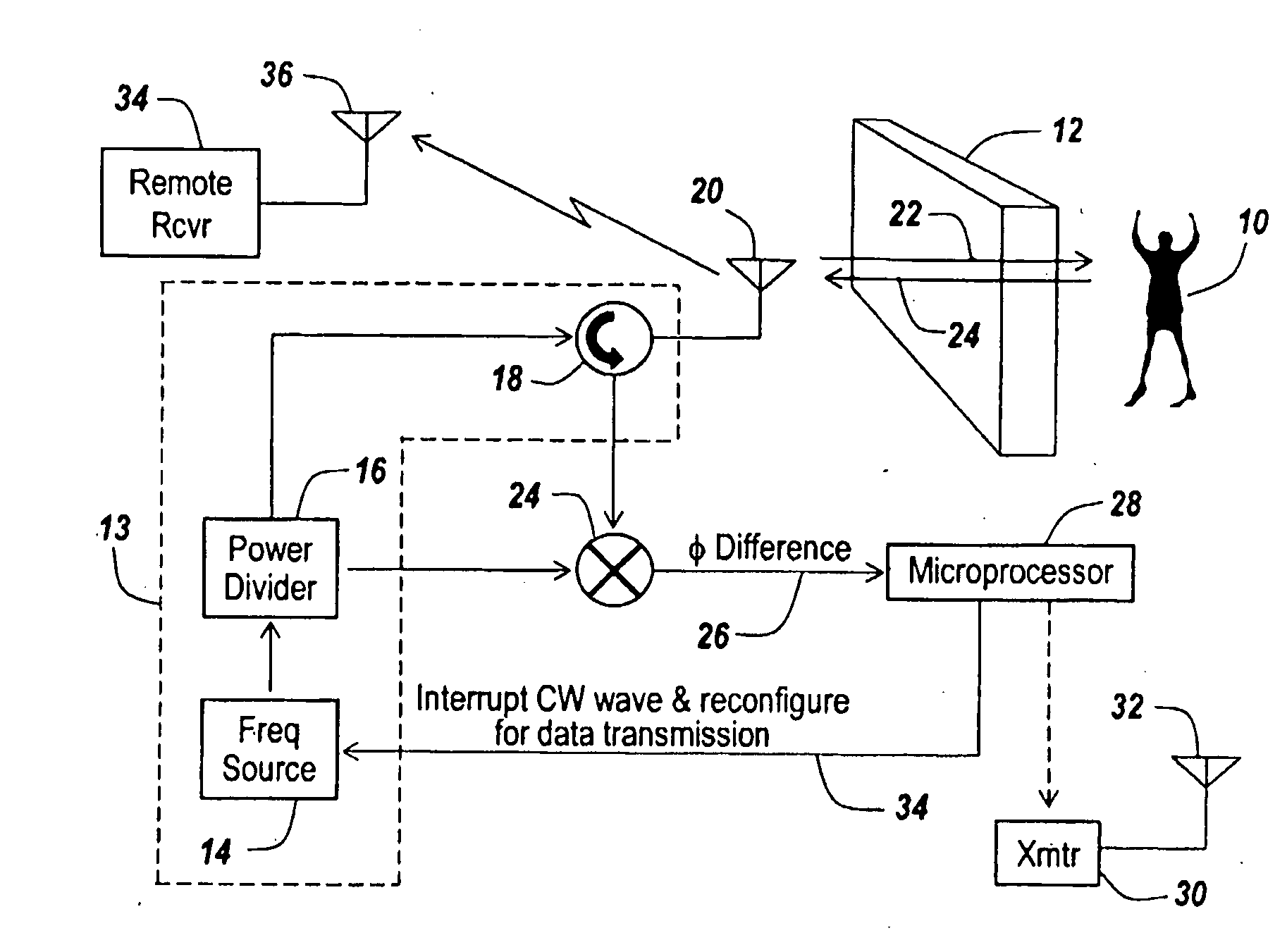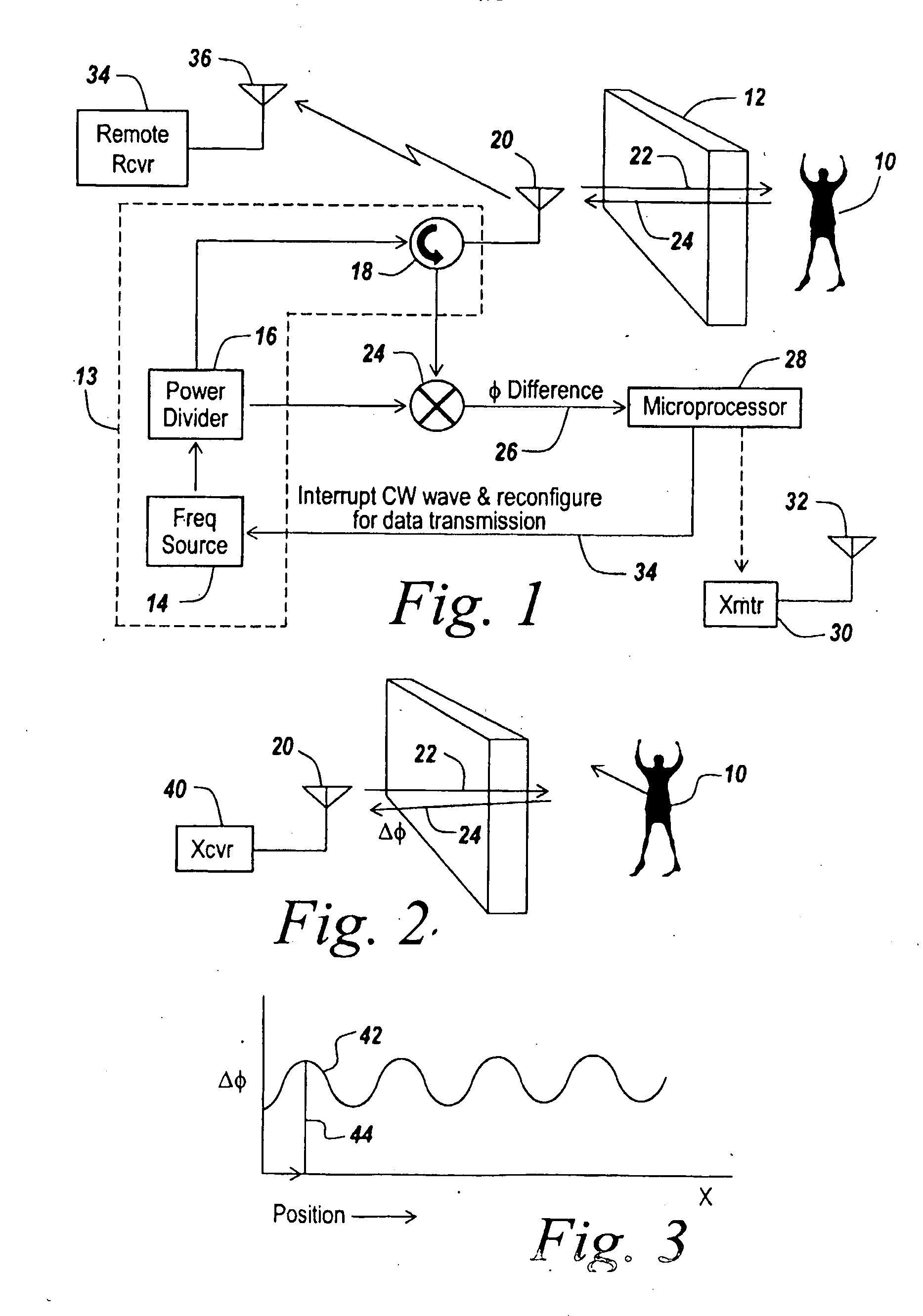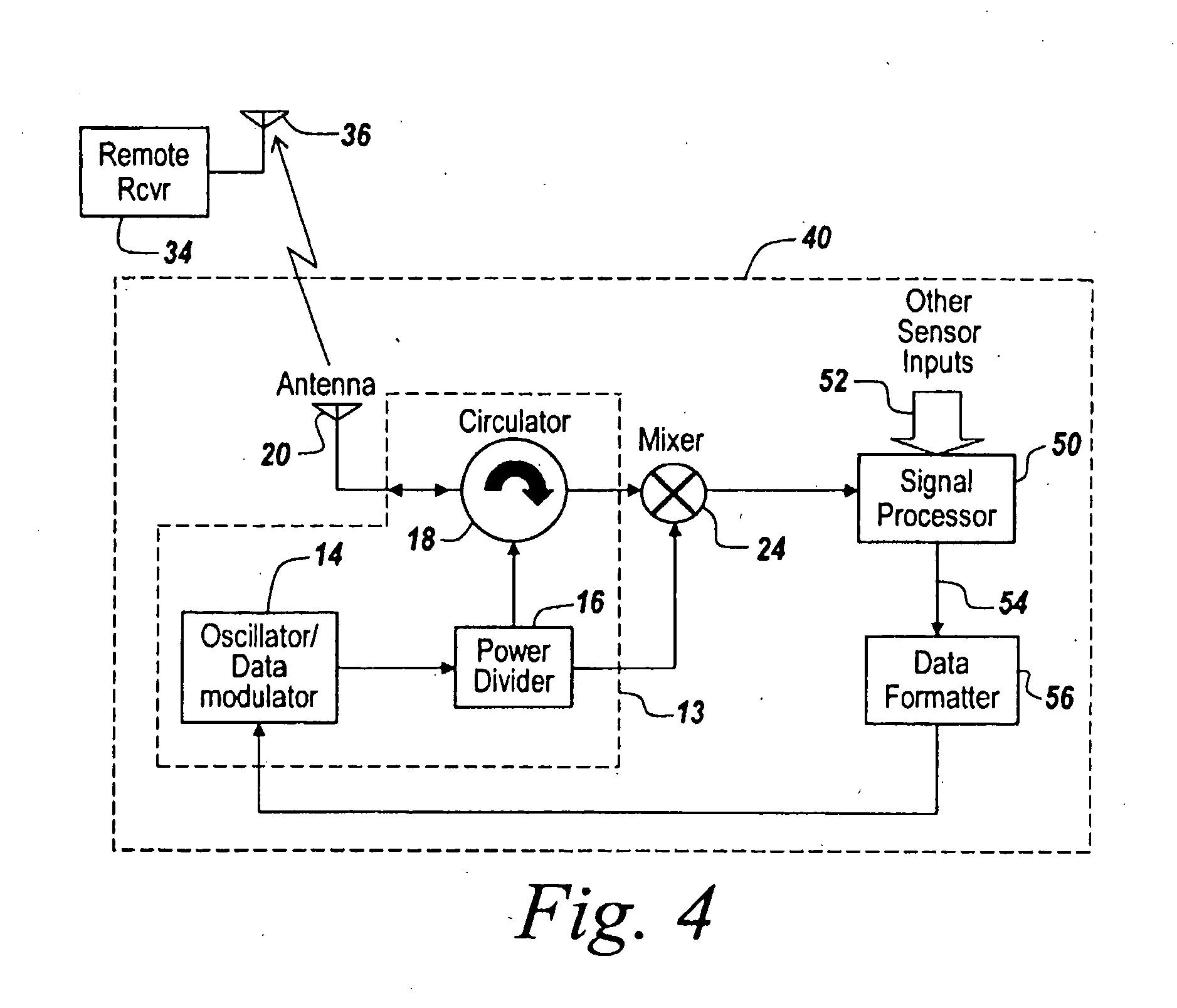Combined Radar and communications link
a communications link and combined radar technology, applied in the field of small, relatively low-power radar systems, can solve the problem that the cw signal is no longer useful
- Summary
- Abstract
- Description
- Claims
- Application Information
AI Technical Summary
Benefits of technology
Problems solved by technology
Method used
Image
Examples
Embodiment Construction
[0030]Referring now to FIG. 1, if it is important to detect the presence of an individual 10 behind a wall 12, then in one embodiment of the subject invention, a CW radar is used. This radar includes a transmitter 13 including a frequency source 14, a power divider 16 and a circulator 18 to drive a radar antenna 20.
[0031]The CW signal from antenna 20, here indicated by arrow 22, is projected through wall 12 towards individual 10, with returns 24 impinging on antenna 20. The return is then coupled via circulator 18 to a mixer 25.
[0032]The output of mixer 24 is indicated by arrow 26 to be the phase difference between the transmitted and returned signals. This signal is applied to a microprocessor 28 containing an analog-to-digital converter that functions in one aspect as a motion detector, the output of which indicates a moving object behind wall 12.
[0033]If one wished to remotely monitor of the motion detector output, one might provide a separate transmitter 30 and its own antenna 3...
PUM
 Login to View More
Login to View More Abstract
Description
Claims
Application Information
 Login to View More
Login to View More - R&D
- Intellectual Property
- Life Sciences
- Materials
- Tech Scout
- Unparalleled Data Quality
- Higher Quality Content
- 60% Fewer Hallucinations
Browse by: Latest US Patents, China's latest patents, Technical Efficacy Thesaurus, Application Domain, Technology Topic, Popular Technical Reports.
© 2025 PatSnap. All rights reserved.Legal|Privacy policy|Modern Slavery Act Transparency Statement|Sitemap|About US| Contact US: help@patsnap.com



